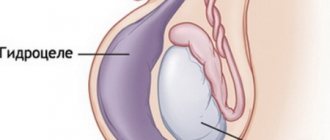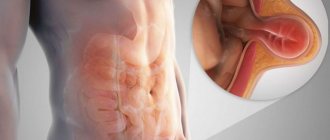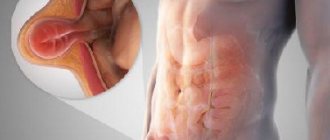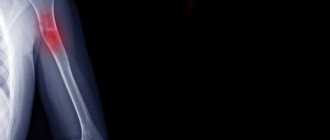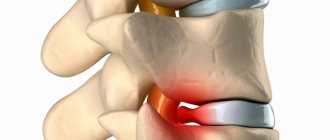An inguinal hernia is a pathological protrusion of internal organs outside the abdominal cavity. Inside this reservoir there may be intestinal loops, omentum and other structures. In childhood, congenital forms of pathology are most common, especially in premature infants. Boys suffer from this disease 10 times more often than girls.
Any situation that causes an increase in pressure in the abdominal cavity can provoke the formation of a hernia: heavy lifting, prolonged crying, screaming, constipation, a strong, prolonged cough. To avoid a threat to health, pediatric surgeons recommend that children undergo surgery to remove an inguinal hernia immediately after diagnosis. It is called hernioplasty.
Indications for surgery
The absolute reason for emergency surgical intervention is a strangulated hernia - a dangerous complication that, without timely help, threatens the lives of children. With it, there is a gradual necrosis of the structures that are inside the hernia due to the cessation of blood circulation in them. This is accompanied by severe intoxication and severe pain in the abdominal area.
Emergency assistance is needed for acute intestinal obstruction. It is formed if intestinal loops get into the hernial sac, resulting in an obstacle to the movement of feces.
In all other cases, even with a mild degree of the disease, a planned operation to remove an inguinal hernia in children is performed.
Causes, mechanism of formation of pathology
There are two fundamental elements in the formation of an inguinal hernia increased intra-abdominal pressure and weakness of the muscular-ligamentous apparatus of the inguinal canal .
Under the influence of high pressure in the abdominal cavity, movable organs are displaced from their usual place and protrude through weak spots in the abdominal wall. A hernial sac with a hilum in the area of the inguinal canal is visually identified. In women, the hernia may extend down into the labia majora. An inguinal hernia in men can spread into the scrotum.
The organs involved in hernia formation include the loops and mesentery of the small intestine, the cecum, the greater omentum, the ureters and bladder, the uterus, the fallopian tubes, and the ovaries.
Factors contributing to the formation of inguinal hernia in adults are the following:
- Burdened heredity;
- Exhausting physical activity with lifting heavy loads - professional weightlifting, loader profession, weight lifters;
- Multiple, multiple pregnancies, childbirth;
- Surgical treatment of prostate tumors, appendicitis;
- History of hernias of any localization;
- Loss of muscle strength and ligament elasticity with age;
- Chronic constipation;
- Prolonged paroxysmal cough;
- Anorexia, obesity 2-3 degrees.
Clinical picture
Symptoms of an inguinal hernia at the onset of the disease are not pronounced. For a long time, the pathology does not cause discomfort, does not reduce the quality of life, and progresses slowly. A small protrusion in the groin area is painless, softly elastic, and resembles an enlarged lymph node. Periodically, the swelling disappears.
As the hernial sac grows, complaints of pain when walking, physical activity, a feeling of fullness, and pressure in the lower abdomen appear. Dyspeptic symptoms are added - a feeling of heaviness, belching, nausea, vomiting; constipation, flatulence, difficulty urinating.
A characteristic sign is increased pain and discomfort when sneezing , coughing, or straining . In the case of an indirect hernia, asymmetry of the scrotum or labia majora is observed with an increase in the affected side. , a clinical picture of an “acute” abdomen appears : sharp pain in the area of the hernia, the hernia ceases to be reduced.
Possible contraindications
Emergency surgery is performed for life-saving reasons. Planned intervention is postponed or canceled if the patient has the following problems:
- individual intolerance to anesthesia;
- acute infectious diseases;
- exacerbation of chronic pathologies;
- inflammatory processes in the abdominal organs.
Possible contraindications and the balance between the risks and benefits of surgical intervention are assessed in each specific case.
Testicular rupture - treatment
Some inguinal hernias are small and do not cause discomfort to men. But a scrotal hernia is a problem.
The only way to cure a scrotal hernia is surgery.
The operation can be planned or emergency if the contents of the hernial sac are pinched.
Laparoscopic hernia surgery is more common today and involves minimally invasive surgery. The surgeon inserts instruments and a camera through small holes in the abdomen. He performs the operation while watching the image on the screen.
The operation is most often performed under general anesthesia.
The gold standard for hernia treatment is the non-tension method. It was introduced into modern surgery by Liechtenstein. The method is based on covering the tissue defect with prosthetic material – mesh. The mesh seals the inguinal canal. This surgical approach is associated with a lower rate of disease recurrence and faster recovery than with other methods.
Diagnostic measures
The main method for determining an inguinal hernia is examination by a surgeon. The protrusion can be clearly felt upon palpation, and in a lying position you can carefully straighten the protrusion and feel the enlarged inguinal ring. Children are simply examined carefully; for older children, the doctor may ask them to bend over, cough, and strain to determine the elasticity and structure of the hernia.
The symptoms of an inguinal hernia may be similar to other diseases, so instrumental examination methods are used to clarify the diagnosis and assess possible complications. These include:
- Ultrasound of the abdominal organs;
- Ultrasound of the pelvic organs for girls;
- Ultrasound examination of the scrotum and inguinal canaliculi for boys.
Examination methods for diagnosis
Diagnosing an inguinal hernia is not difficult. By collecting a detailed history of the disease and life, and an objective examination, a preliminary diagnosis is made.
To clarify, additional examination methods .
- Laboratory tests (general analysis and blood biochemistry, liver tests, coagulogram, general urinalysis) - prescribed to identify the degree of severity, in preoperative preparation to assess possible risks during surgery;
- Ultrasound of the abdominal organs, pelvis, inguinal canal, scrotum - allows you to visualize the contents of the hernial sac, differentiate an inguinal hernia from other diseases, clarify the type, assess the condition of the inguinal canal and the organs involved;
- Herniography - an X-ray examination with contrast is performed for an internal inguinal hernia, when there are complaints of pain in the groin area, but there is no obvious protrusion;
- Irrigoscopy – X-ray contrast examination of the colon to determine its location;
- Cystography is an X-ray examination of the bladder with the introduction of a contrast agent, prescribed for suspected sliding inguinal hernia involving the urinary system;
- Computed tomography - allows you to accurately localize the hernial orifice, determine the contents of the hernial sac, and is performed in doubtful cases to verify the diagnosis.
The doctor who has diagnosed an inguinal hernia will tell you what to do next and select safe treatment with minimal risk of relapse, taking into account individual characteristics.
Effective Treatments
Easily reducible hernia contents give the false belief that the inguinal hernia has resolved on its own.
There are no conservative treatment options . An elastic bandage prevents strangulation, slows down the rate of progression of an inguinal hernia, surgical treatment completely neutralizes the pathological process, and reduces the risk of relapse to a minimum.
Incarceration with signs of an “acute” abdomen is a direct indication for emergency surgical care. The operation is performed as quickly as possible with minimal examination and preoperative preparation. Planned treatment of an inguinal hernia, the symptoms of which do not cause concern for the patient’s life, is carried out after a full examination.
Hernioplasty is performed using open access and laparoscopic methods .
The operation using the Lichtenstein method is a classic version of open repair, the “gold ” standard , which is effective for hernias of any size and location. Does not require general anesthesia. The protrusion is reduced without opening the hernial sac, after which a special mesh is installed to strengthen the structures of the inguinal canal. With this treatment, the risk of relapse is less than 1%. But in the first days after the operation, pain may be expressed; in the long term, chronic abdominal pain is sometimes bothersome.
A less invasive way to eliminate an inguinal hernia are laparoscopic techniques: transabdominal preperitoneal repair (TAPP), total extraperitoneal repair (TEP).
Access is made through three small punctures in the abdominal wall, which ensures quick recovery and minimal cosmetic defects. The operation is performed under general anesthesia using an endoscopic unit. An ideal correction option for a bilateral process. The intensity of pain after surgery is significantly lower.
How is surgery for inguinal hernia performed on children?
Conservative methods of treating the disease are practically not used, since the effectiveness of such methods is extremely low, and the risk of strangulation of the hernia is high. The only correct solution is surgical removal of the formation.
There are two options for hernioplasty:
- open access;
- using laparoscopic equipment.
The optimal method of surgery is chosen by the doctor based on examination data, the child’s age and possible risks. The type of intervention determines how long the operation for an inguinal hernia in a child lasts. The operation time can vary from 30 minutes to an hour, taking into account anesthesia. Regardless of the chosen method, deletion occurs according to a certain algorithm:
- incision of the hernial sac and restoration of the anatomically correct location of internal organs and tissues;
- suturing of the hernial orifice;
- strengthening the inguinal canal or the patient’s own tissues.
All manipulations are performed under general anesthesia.
In modern pediatric surgery, laparoscopic hernioplasty is considered the preferred method of treatment. It is less invasive: minimal blood loss and small incisions reduce the risk of complications and shorten the recovery period. In some cases, it is possible to perform an open operation on a child to remove an inguinal hernia in the scrotal area. The doctor determines the method of performing the operation individually in each specific clinical case.
What is an inguinal hernia?
Inguinal hernia is one of the most common pathologies in young children. Most often it is congenital, and there is evidence that in some newborns it appears as a result of genetic predisposition. Pediatric surgeons diagnose it in approximately 5% of children, and in the group of infants born prematurely, the frequency of this pathology is, according to various estimates, from 15% to 25%.
In older children, it can develop up to primary school age. Additional risk factors are obesity, low physical activity, and abdominal wall weakness.
It occurs in both boys and girls, but in boys it is much more common. Usually it forms only on one side, right or left, but it can also be bilateral. Due to physiological differences in small male and female patients, it is structured slightly differently in them. As in the case of any other hernia, its essence is that part of the internal organs protrudes through the gap (in this case, the inguinal canal) outward, occupying an incorrect position. These can be parts of the intestines, bladder, omentum, uterine appendages (in girls).
The hernia can be direct, when it enters the inguinal canal, bypassing its internal opening, or oblique, when it exits through the internal inguinal ring. In children, it is most often oblique, and a congenital inguinal hernia is almost always oblique. In boys, the pathology can also be inguinal or inguinal-scrotal, depending on the location.
Rehabilitation after surgery to remove an inguinal hernia in children
After surgery for an inguinal hernia, children, as a rule, recover quickly and without any problems. Parents will have to somewhat limit the child’s mobility, change bandages regularly, and also follow a number of simple rules.
- For 5–7 days after the intervention, it is undesirable to give children foods that increase gas formation and the risk of constipation - beans, potatoes, sweet pastries, fatty meats and fish.
- For 1-2 weeks you will have to limit physical activity: running, jumping, bending and squatting.
- Bathing and washing should be postponed until the wounds have completely healed.
- After removing the bandages, it is necessary to treat the wound area with a local antiseptic for 1–2 days.
Under no circumstances should you:
- warm the area of inflammation;
- apply medicinal ointments and healing compounds to the wound;
- give babies any medications without consulting a doctor.
But even today, doctors voice disappointing statistics - too late, many parents turn to doctors with this pathology, strangulation of the child’s inguinal hernia, when the pathology affecting the anterior wall of the peritoneum was not previously identified. Doctors are also outraged by the popularity among the people of unconventional, even quackery, methods of treatment from the arsenal of folk remedies - all this determines the need for educational programs for all parents.
A hernia is a pathological protrusion in an adult or child, localized in various parts of the body. The most common types of hernias are inguinal and umbilical – we’ll talk about them further. What provokes such protrusion, what statistics are announced by doctors, what parents themselves should do - all this will be discussed further.
Inguinal protrusion.
This pathology is a protrusion localized in the lower part of the peritoneum and groin, the cause of which is the child’s vaginal process, which is not prolonged, encompassing a loop of intestine and omentum, as well as the ovary. It is diagnosed in 5% of children, more in premature babies, and if it is burdened with genetic pathologies of connective tissue, doctors will diagnose a hernia 2-3 times more often. According to medical statistics, these types of hernias are often accompanied by congenital pathologies affecting the musculoskeletal system.
If we take into account such a statistical criterion as gender, the ratio between boys and girls who are affected by this pathology varies according to different data. These numbers vary from 3 to 1 to 10 to 1 for boys and girls, respectively. As doctors note, this may be due to the anatomical process of natural descent of the first testicles from the internal cavity of the peritoneum into the scrotal sacs.
According to statistics, 6 out of 10 boys are diagnosed with a right-sided type of inguinal protrusion, and 1 out of 10 are diagnosed with a 2-sided type. As for girls, in half of the cases doctors diagnose them with bilateral types of hernias.
Signs of pathology.
The main symptom that indicates this pathology is a protrusion characteristic of such a disease, localized in the groin. It especially manifests itself after minor exertion or when the baby cries intensely, which is due to an increase in pressure inside the peritoneum.
If a bulging hernia occurs in a child and is not burdened by concomitant pathologies, it is soft and elastic in structure, has a loose structure, and can easily be bulged back into the peritoneal area. Diagnosing such a hernia through palpation does not bring discomfort or unpleasant sensations to the patient. But it is often accompanied by light rumbling sounds when its contents include a loop of intestine.
Dropsy affecting the lining of the male testicle is a common occurrence in pediatrics, and in this case, doctors can visually diagnose a small protrusion, some swelling localized in the area of the scrotum. Dropsy that affects the membrane of the testicles in boys goes away on its own, without the intervention of surgeons, in the 1st year of life. If it does not go away in the first 2 years of life, doctors practice surgical intervention.
The appearance of a characteristic protrusion in the groin area or scrotum should not go unnoticed by parents and must alert them. In this case, it is imperative to show the baby to such a specialized specialist as a pediatric surgeon. At the moment, doctors practice planned surgical intervention immediately after making and confirming the diagnosis.
But parents should remember that in children under six months of age, especially with concomitant complications of one or another pathology, if it is possible to easily correct the hernia, surgical intervention by surgeons should be postponed until six months of age. The main thing is to observe the baby with a pediatric surgeon all this time. If at least one case of infringement is diagnosed, immediate surgery is performed.
Causes of pathology.
The main reason that provokes inguinal protrusion in a child is the vaginal process developing in the peritoneal cavity. At its core, it is precisely the protrusion of the peritoneum itself beyond its limits, into the groin area. Its function is the reduction of the gonads in boys, that is, the process of descent of the testicle from the peritoneal cavity into the scrotum.
When the testicles have already descended into the scrotal cavity, the natural process of tightening and fusion of the appendix occurs. If this does not result in complete retraction of the process, all the prerequisites are formed for the further development of inguinal protrusion, dropsy, and other pathologies.
Inguinal type of hernia and its strangulation.
If a child is diagnosed with strangulated inguinal hernias, in this case there is compression of the hernial sac itself and its internal contents. As a result, blood flow in the clamped organs is disrupted, and necrosis may develop, in which internal tissues and affected systems die.
More often, doctors diagnose strangulation in premature babies, newborns up to one year old, when in a boy the internal loop of the intestine, or strands of the internal omentum are strangulated; in girls, the ovary is strangulated; somewhat less often, due to such compression, the uterine tubes in the reproductive system, as well as a loop of intestine, are affected.
Infringement is directly related to disruption of normal blood and lymph flow, increased swelling - this only aggravates the situation, causing compression. This leads to the development of varicose veins and tissue necrosis of the organ affected by the abnormal infringement. Strangulation or compression of the hernial sac and its internal contents in a child can also be determined visually - the hernia itself will be of a dense structure, manifesting itself as increased pain, swelling and local redness will appear in the groin area.
The most sensitive tissue to abnormal disturbances in blood and lymph flow is the ovaries themselves in newborn girls - even short-term infringement can provoke necrosis of the affected organ. At the same time, an infringement affecting the ovary can provoke underdevelopment of the reproductive system and provoke female infertility in the future. In this case, taking into account such factors, immediate surgical intervention is indicated.
For boys admitted to the hospital with a short history of strangulation, when there are no symptoms of compression of the entire contents of the hernia sac, doctors practice a set of conservative treatment measures. The goal is to medicinally relax the muscles and reduce swelling, subsequent protrusion of the hernia. Most often, the doctor prescribes an additional course of antispasmodics and sedatives.
When the inguinal hernia is repaired, the little patient’s condition stabilizes, doctors recommend a planned operation. If doctors diagnose the child’s satisfactory condition and the absence of severe concomitant pathologies, surgical intervention should not be postponed. In this case, there is always a high probability of repeated relapse, infringement, which may end in a less favorable outcome. In addition, a relapse greatly complicates the operation and this is due to the formation of dense adhesions in the area between the hernial sac and intestinal segments.
If conservative treatment methods do not give positive dynamics, the operation is performed in emergency mode. If the strangulation has a long history and negative symptoms of compression of the entire contents of the hernial sac are detected, surgery is started immediately, without first prescribing a course of drug therapy. Due to the anatomical features of the body, operations are easier to perform on girls than on boys.
If there is a failure in the normal blood flow circulating in the strangulated, compressed inguinal sac, the organ itself, they practice prescribing a complex of medications and other methods of conservative treatment, which allows the vital signs of the latter to be restored. If there is no positive dynamics of treatment, the organ affected by necrosis is simply removed. But this is rare in medical practice - according to statistics from foreign doctors, removal of the affected organ is carried out in 1.5% of the total number of cases.
Another complication that can aggravate the course of a strangulated inguinal hernia in a boy is a disruption in the normal blood flow and nutrition of the testicles. This diagnosis is given to 5 out of 100 boys diagnosed with an inguinal hernia and its strangulation, when in the absence of effective and prompt treatment, testicular atrophy, its reduction in size and cessation of its functioning may develop.
According to statistics from world medical practice, repeated recurrence of the development of inguinal protrusion is less than 1 percent. Many scientists put forward the opinion that frequent repetitions and relapses can occur after unscheduled, emergency operations. It is timely diagnosis and planned treatment of an identified inguinal hernia that will make it possible in the future to reduce the possibility of developing serious complications, increasing the risk of developing concomitant pathologies that aggravate the course of the disease during this type of surgical intervention.
Also, an emergency consultation with a doctor is also necessary if there is a change in the baby’s general condition – sudden attacks of anxiety, as well as vomiting, involuntary flexing of the legs and refusal to eat, an increase in body temperature. Such symptoms can be supplemented by compaction in the groin area and the development of pain - in this case we are talking about infringement of the inguinal protrusion in the child. If you do not show the baby to doctors in a timely manner, this provokes the development of severe, negative consequences in the child, for example, necrosis, textural atrophy.
Let's talk about hernia.
Many parents widely practice the method of folk treatment for inguinal protrusion of hernias - a conspiracy, after reading which the protrusion will go away on its own. As much as possible? In this situation, everything is quite simple - ancient shamans, midwives attending births, midwives examining children, knew about such a phenomenon as spontaneous, spontaneous closure of a defect in the ring that forms the umbilical cord in a child under 3-4 years of age. Such knowledge allowed them, so to speak, to treat children for a certain fee - the best option for earning money, supported by myths existing among the people.
According to the observations and statistics of modern doctors, such methods of alternative medicine, at best, will not bring relief, at worst, they can only aggravate the course of the pathology, making it difficult to carry out surgical interventions in the future.
Umbilical type of hernia.
This is also one of the most common, frequent pathologies that surgeons encounter in their own medical practice, developing in every 5th child, and in every 3rd premature child. A child's minimal defect in the internal ring that forms the umbilical cord is diagnosed in every newborn without exception - with a loud cry or crying, you can visually see a hernial protrusion and this phenomenon often worries parents. It is often associated with the development of an umbilical hernia, but the diagnosis is confirmed extremely rarely.
This type of hernia is characterized by spontaneous, independent healing, but in this case it is important to take into account the size of the defect itself - if it is less than 1.5 cm in diameter, then by 3-4 years it will heal on its own. But if it does not last up to 5 years, surgical intervention is required. Therefore, it is important to monitor the child’s condition and observe him with a pediatric surgeon, and if an exacerbation develops, surgery is performed.
Practiced methods of non-traditional, folk treatment based on the principle of spells and incantations do not give the desired therapeutic effect. Regarding conservative treatment methods, doctors most often practice a course of therapeutic general and local massage of the affected peritoneum, exercise therapy. But when the hernia or protrusion of the umbilical ring is large in size, doctors talk about the need for surgery.
When diagnosing an umbilical hernia, the operation aims at suturing the defect itself - doctors make an incision above the navel itself in each of its skin folds and correct the defect itself. This method of making an incision in the child’s skin folds makes the stitches almost invisible on the body in the future.
Gradually, the elasticity and mobility of skin folds and tissue will decrease and the defect itself, protrusion of the internal ring forming the umbilical cord, which is not eliminated in the first days of life, in the future in an adult can develop into a serious pathology, an abnormal protrusion of a hernia. Often, such protrusions of a hernia typically show themselves in women and precisely after natural childbirth, when during a caesarean section such protrusion manifests itself to a lesser extent. This type of umbilical protrusion is characterized by frequent relapses that are quite serious in their course, and therefore it is so important to treat it as early as possible. This will determine the positive dynamics of treatment in the future and the prevention of damage to the reproductive system. Umbilical and inguinal types of hernias in infants are a fairly common occurrence in the practice of doctors, especially in the practice of surgeons. It is a very trivial topic that both doctors and parents themselves are faced with - specialists have long developed effective methods for comprehensive diagnosis and effective treatment, and on the Internet and in specialized literature you can find enough data about it. Modern medical centers and clinics provide a lot of information about where to undergo diagnostics and subsequent treatment for hernial protrusion.
Possible complications after surgery
Complications after removal of an inguinal hernia are quite rare. In 0.5–1% of cases the following may occur:
- slight swelling;
- temperature increase;
- accumulation of lymphatic fluid in the tissues of the pelvic organs.
The risk of recurrent hernia does not exceed 1%. Relapses are more often observed in premature babies and children who have undergone emergency intervention. The chances of a new hernia forming increase if the child moves little, is obese, or does not exercise.
Strangulated testicular hernia
A strangulated testicular hernia is a life-threatening condition. If bowel tangles occur inside the scrotum, the blood vessels become narrowed and the bowel does not receive enough oxygen to function properly. Due to lack of oxygen, the intestines die (intestinal necrosis) and severe infection and sepsis can occur.
Symptoms of a compressed hernia:
- swollen testicle;
- increase in scrotal hernia;
- the hernia changes color to blue or red;
- nausea;
- vomit;
- heat;
- chills;
- rapid heartbeat - tachycardia;
- sudden, increasing pain in the groin or pain in the testicles.
If these symptoms are noticed, you should immediately seek medical help!
